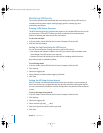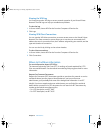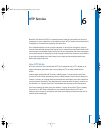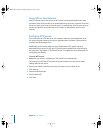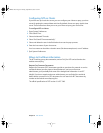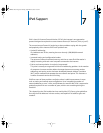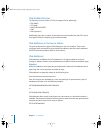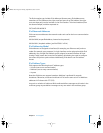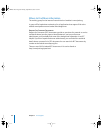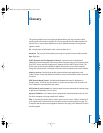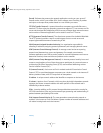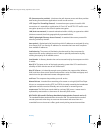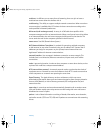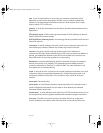
84 Chapter 7 IPv6 Support
IPv6 Enabled Services
The following services in Mac OS X Server support IPv6 in addressing:
• DNS (BIND)
• IP Firewall
• Mail (POP/IMAP/SMTP)
• SMB
• Web (Apache 2)
Additionally, there are a number of command-line tools installed with Mac OS X Server
that support IPv6 (for example, ping6, and traceroute6).
IPv6 Addresses in the Server Admin
The services above don’t support IPv6 addresses in the user interface. They can be
configured with command-line tools to add IPv6 addresses, but those same addresses
will fail if entered into address fields in Server Admin.
IPv6 Addresses
IPv6 addresses are different than IPv4 addresses. In changing addresses, there are
changes in address notation, reserved addresses, the address model, and address types.
Notation
While IPv4 addresses are 4 bytes long and expressed in decimals, IPv6 addresses are 16
bytes long and can be expressed a number of ways.
IPv6 addresses are generally written in the following form:
xxxx:xxxx:xxxx:xxxx:xxxx:xxxx:xxxx:xxxx
Pairs of IPv6 bytes are separated by a colon and each byte is represented as a pair of
hexadecimal number, as in the following example:
E3C5:0000:0000:0000:0000:4AC8:C0A8:6420
or
E3C5:0:0:0:0:4AC8:C0A8:6420
IPv6 addresses often contain many bytes with a zero value, so a shorthand notation is
available. The shorthand notation removes the zero values from the text representation
and puts the colons next to each other, as follows:
E3C5::4AC8:C0A8:6420
LL2351.Book Page 84 Monday, September 8, 2003 2:47 PM



